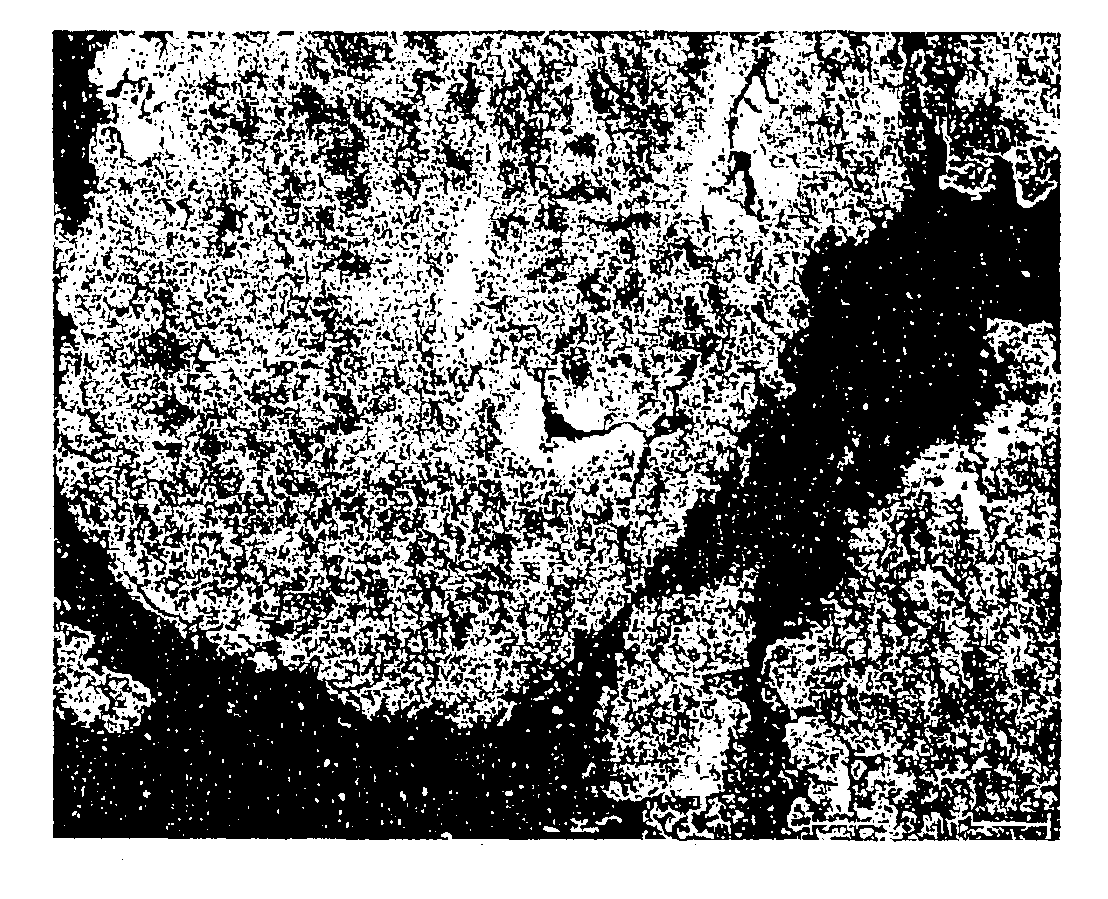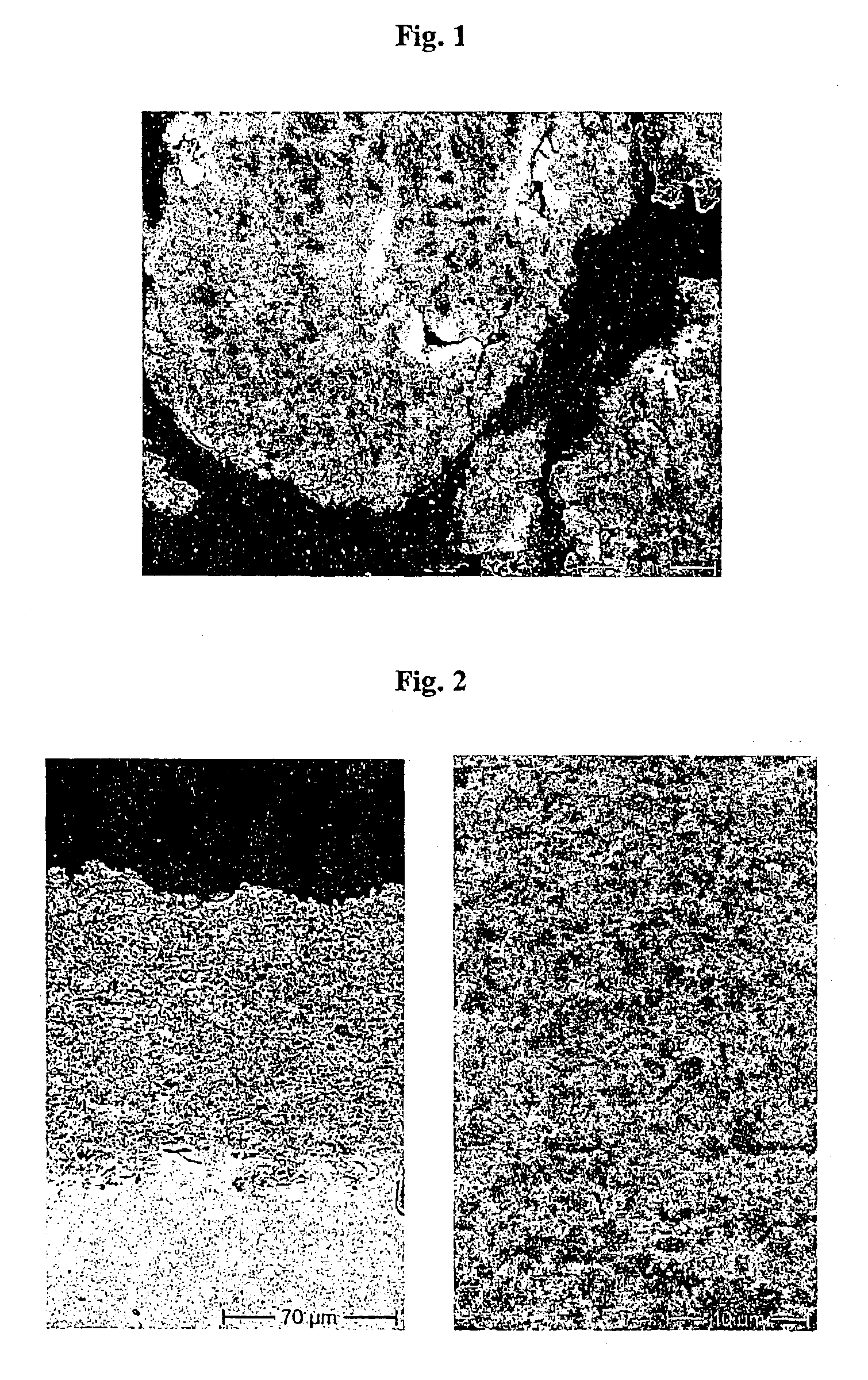Thermally applied coating of mechanically alloyed powders for piston rings
a technology of mechanical alloying powder and piston ring, which is applied in the field of wear-resistant coating, can solve the problems of coating, too, slipping of piston ring, and lapse into the borderline region of their performance, and achieves the effects of minimizing negative effects, reducing wear, and reducing wear
- Summary
- Abstract
- Description
- Claims
- Application Information
AI Technical Summary
Benefits of technology
Problems solved by technology
Method used
Image
Examples
example 1
[0038]In Example 1 conventional aluminum oxide spray powder was milled with a conventional spray powder comprised of NiCr in volumetric proportions of 1:1. A powder of extremely finely distributed aluminium oxide phases (gray) resulted after the milling process (FIG. 1: mechanically alloyed powder NiCr-34Al2O3). After processing by means of HVOF a very satisfactorily adhering, thick coating was obtained that exhibited the same microscopic structure as the powder (FIG. 2: HVOF sprayed coating exhibits identical microstructures).
example 2
[0039]In Example 2 up to 20% by volume of a powdered solid lubricant was alloyed with the powder of Example 1, which is demonstrably present in the coating after processing using HVOF and clearly improves the frictional behavior of the coating on the piston ring.
example 3
[0040]In Example 3, additional metallic elements such as Mo were added by alloying to the matrix of Example 1, in order to improve the tribological properties of the piston ring coating. The Mo powder is only slightly finely milled in the milling process due to its high viscosity; however, it occurs in the powder and in the coating as a uniformly distributed, excellently imbedded phase. The burn trace behavior of the piston ring coating was demonstrably improved in this way.
PUM
| Property | Measurement | Unit |
|---|---|---|
| particle size | aaaaa | aaaaa |
| thickness | aaaaa | aaaaa |
| size | aaaaa | aaaaa |
Abstract
Description
Claims
Application Information
 Login to View More
Login to View More - R&D
- Intellectual Property
- Life Sciences
- Materials
- Tech Scout
- Unparalleled Data Quality
- Higher Quality Content
- 60% Fewer Hallucinations
Browse by: Latest US Patents, China's latest patents, Technical Efficacy Thesaurus, Application Domain, Technology Topic, Popular Technical Reports.
© 2025 PatSnap. All rights reserved.Legal|Privacy policy|Modern Slavery Act Transparency Statement|Sitemap|About US| Contact US: help@patsnap.com


